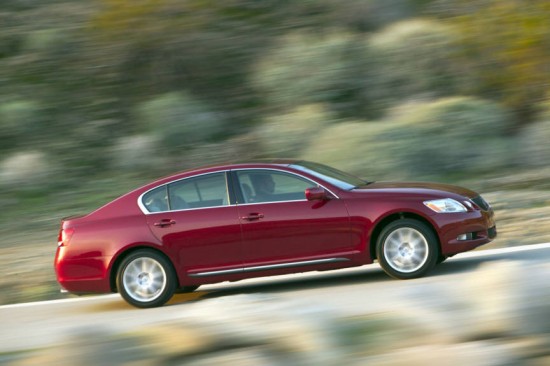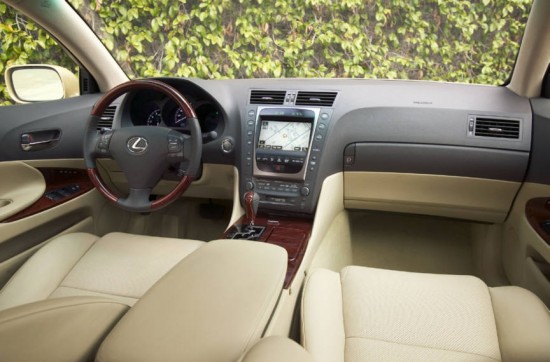2005 Lexus GS330
If you want a glimpse at the future of automobiles, take a ride in this Lexus.
It’s not a “car of the future” in the sense of GM’s Autorama show of the 1950s, which featured cars with wild styling and out-of-this-world gizmos that never made it into your garage.
There’s nothing about it that’s truly innovative — it doesn’t fly, doesn’t steer by itself, doesn’t have a nuclear reactor under the hood — but after driving Lexus’ totally new GS sports sedan, I can’t help but think it’s how all cars will be 15 years from now.
Part of this futuristic feel comes from the sheer amount of technology packed into it. For starters:
— Glass covering the instrument pod can change transparency depending on the lighting conditions, making the gauges easy to read no matter how the light shines on them. Lexus calls this an “Electro Chromatic Device.”
— Bluetooth technology lets your cell phone link with your car so you can answer a call without ever picking up the phone.
— Electronic steering uses a computer to vary the amount of power assist depending on driving conditions. It helps low-speed maneuvering without sacrificing feedback or making the car jittery on the highway.
— It doesn’t even come with a real key. There’s just a little gadget you put in your pocket so the car can recognize when you’re near, unlocking the doors automatically when you pull on the handle. You sit in the car and press a button to start the engine — nothing could be simpler, despite the complex technology behind it all.
There are more features than I can fit in this column, but suffice it to say that this is an extremely high-tech car with plenty of high-tech acronyms to go along with it. An actual sentence in the Lexus press release reads, “Vehicle Dynamics Integrated Management (VDIM) integrates and manages ECB, ABS, BA, EBD, VSC and Electronic Power Steering (EPS) for total-vehicle dynamics control.”
I won’t pretend to know what all that means, nor do I care to learn. All I care about is how the car travels, which — in the case of the GS — is absolutely perfect.
The car’s incredible technology is hidden, exactly as it should be, to keep the dash clean and free of those tiny buttons with cryptic symbols that can make other cars hard to figure out. You can immediately use the car without having to read every page in the owner’s manual just to change the radio station.
To help keep the dash simple, Lexus hid the seldom-used buttons — like power mirror adjustment, fuel door opener, trunk release and a few other functions — on a small panel that folds away when not in use. The buttons are easy to use when you need them, but they stay out of sight the rest of the time. It’s a great idea that will probably start showing up in other cars a few years from now.
And, being a Lexus, it has all the luxury features, upscale materials and rock-solid, rattle-free construction you’d expect in the cabin.
Lexus designed the GS to beat the benchmark midsize sports sedan — BMW’s 5 series — in performance, price and quality, and it succeeds in all three areas. At least it does on paper.
The GS and the 5 series are virtually identical performers in terms of handling, braking and acceleration numbers, with the GS taking a narrow edge according to factory data. They’re also about the same size and have similar rear-wheel-drive platforms and handling characteristics.
Where they differ is something you can’t see: the soul.
Lexus made the new GS so smooth, refined and perfect in every way that it feels fairly sterile and lifeless. It seems like it was born in a computer lab, not on the racetrack, unlike the feeling of purebred heritage and raw excitement you get behind the wheel of a BMW.
If the Lexus has a weakness, it’s that its refinement makes it more like a tool for transportation than a thrilling toy that you lust after.
And that’s another reason the GS is a sign of things to come. It simply does its job well as a sporty car, always meeting and exceeding expectations for comfort, performance and style without drawing undue attention to itself.
Two engines are available: a 3.0-liter V6 in the GS 300 and a 4.3-liter V8 in the GS 430. I tested the new V6, which made 245 horsepower and got 30 miles per gallon on the highway. It performed beautifully enough — in both smoothness and performance — to make the 300-horsepower V8 seem like total overkill.
Pricing is also right on par, if not below what you’d expect for such a high-tech, high-performance, well-engineered car. The V6 model starts around $43,000 and the V8 is around $51,000, both of which come loaded with top-of-the-line features.
That’s not bad for a car that’s truly ahead of its time.








